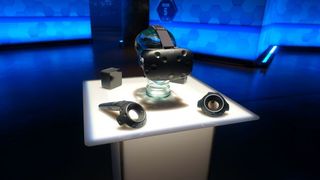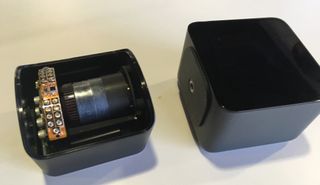Valve is working on 3 full-blown VR games, says the VR market has 'exceeded its expectations'
Gabe Newell says VR needs better games even more than it needs a price drop.

During a round-table interview with press yesterday, Valve boss Gabe Newell expanded on what we heard during his recent AMA—that Valve has multiple games in development—stating that three of them are “full games” for the HTC Vive headset and SteamVR.
“We think we can make three big [virtual reality] games,” said Newell, distinguishing these projects from Valve’s more experimental VR game, The Lab. “We think that we know enough now to do that, and we’re going to find out if that’s the case. We’re pretty sure that all the other game developers are going to learn positive or negative lessons from what we do, which is sort of where we have to be right now.”
Newell wouldn’t say much more about the games, except that “they’re very different” from each other, and that Valve is working with both the Source 2 and Unity engines. Much more was said about the VR market and hardware development in general. Despite the very high barrier to entry—an HTC Vive is still $800—Valve is happy with the platform’s growth.
“Our expectations are being met and exceeded by where [VR is] at right now,” said Valve’s DJ Powers, who reported an 86 percent increase in monthly active VR users during the second half of 2016, and said that 30 of the VR applications on Steam have made over $250,000 in revenue so far.
Above: A pair of prototype SteamVR controllers that look a bit like the Oculus Touch controllers.
The key to expanding VR, according to Newell, is not to lower the hardware cost right now, but to first build games and applications people really, really want.
“I can’t point to a single piece of content that would cause millions of people justify changing their home computing at all,” said Newell. “[VR is] a great thing for enthusiasts and hardcore people, and where we are today is way further down the road than we were a year ago, but it’s just going to be this slow, kind of painful fits and starts kind of thing.”
The biggest gaming news, reviews and hardware deals
Keep up to date with the most important stories and the best deals, as picked by the PC Gamer team.
Cost reductions will come—Newell compared the current state of VR to personal computers in 1981—but not before there’s a VR application with undeniable mass-appeal. Hence the three games Valve is working on. In the meantime, Valve described how the hardware will improve in every conceivable way, from lighter headsets to wireless options and even potentially ‘house-scale’ tracking that combines the vision of sensors throughout a space.
One big development is that display manufacturers are seeing an opportunity in specialty-made panels for VR as opposed to repurposing smartphone tech. These new displays will improve resolution and refresh rate as soon as 2018 or 2019, said Newell, and eventually he believes VR panels will outperform any other display you can buy, whether they’re on smartphones or desktop monitors. “Eventually you’ll reach the point where you’ll be talking about incredibly high resolutions running at 200Hz,” he said.

We need open hardware standards, we need open software standards, because that’s what developers need in order to go and explore the space.
Gabe Newell
The most important thing to Valve right now—or at least what was stressed most during the Q&A—is openness. By licensing its tracking technology, for instance, Valve has given other companies the opportunity to build their own headsets and controllers. And by creating and sharing those standards, game developers should be able to build software for SteamVR-based hardware regardless of who makes it.
“We need open hardware standards, we need open software standards, because that’s what developers need in order to go and explore the space,” said Newell. “As those pieces come together then we’ll start learning from our successes and failures, other people’s successes and failures, lots and lots of great applications. But it’s not a cost [reduction] and advertising, ‘let’s look like a console launch.’”
So it’s slow and steady for SteamVR. The hardware is expensive for now, but Newell doesn’t think even a hypothetical '80 percent price reduction' would instantly create a market for VR. First, there needs to be a better reason to use it. I think that's true—I've played some great VR games, but nothing that's got me strapping on a headest every day, or even every week—but price is an obvious issue. Not only is an HTC Vive expensive, it’ll be outdated in a year or two if Newell’s own predictions about hardware improvements are true.
It’s surprising to hear that, despite this, the market is sustaining itself. “People have shipped games, the games are profitable, people are working on their second generation of games that incorporate everything they’ve learned and saw in the first generation of games,” said Newell. What comes next, now that the medium has some experienced creators, is still an unknown—that mass-appeal hit. “You have to sort of hope, you aspire, you’re optimistic that the unique characteristics of VR systems will cause you to discover a bunch of stuff that just isn’t even possible on any of the existing platforms.”

Tyler grew up in Silicon Valley during the '80s and '90s, playing games like Zork and Arkanoid on early PCs. He was later captivated by Myst, SimCity, Civilization, Command & Conquer, all the shooters they call "boomer shooters" now, and PS1 classic Bushido Blade (that's right: he had Bleem!). Tyler joined PC Gamer in 2011, and today he's focused on the site's news coverage. His hobbies include amateur boxing and adding to his 1,200-plus hours in Rocket League.
Most Popular






